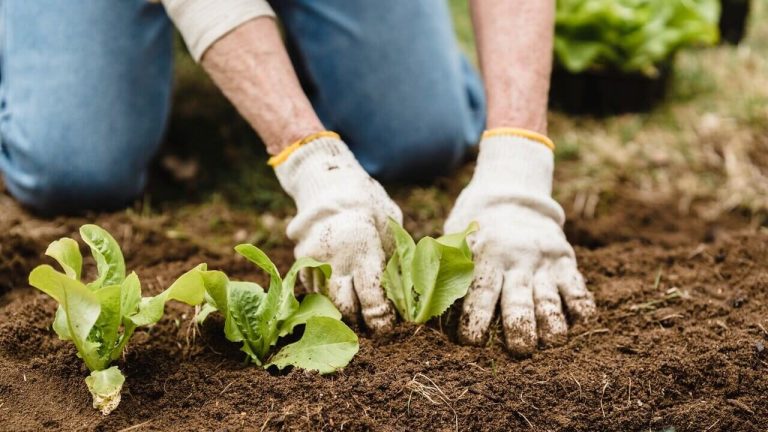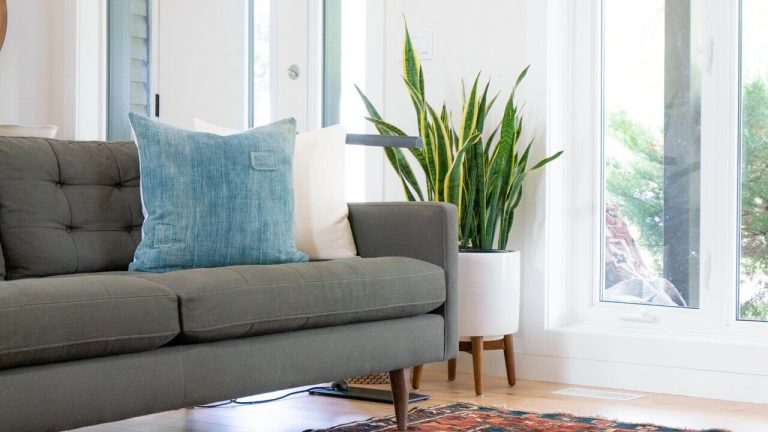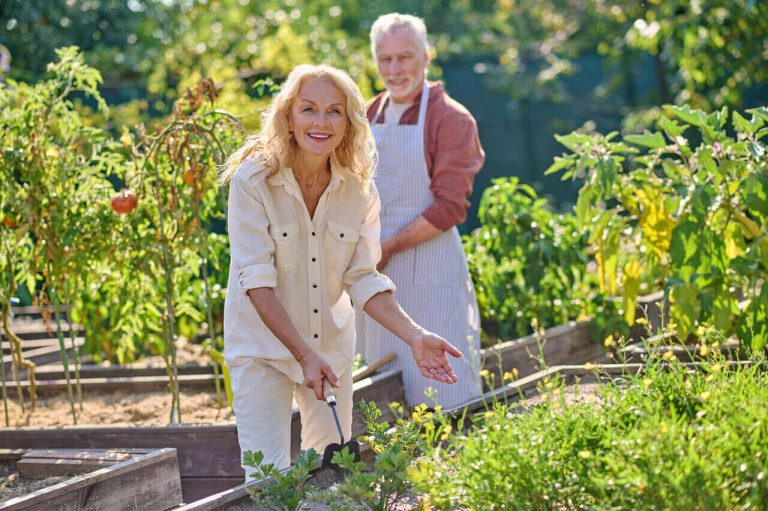Top Gardening Aids Keep You Gardening for a Lifetime
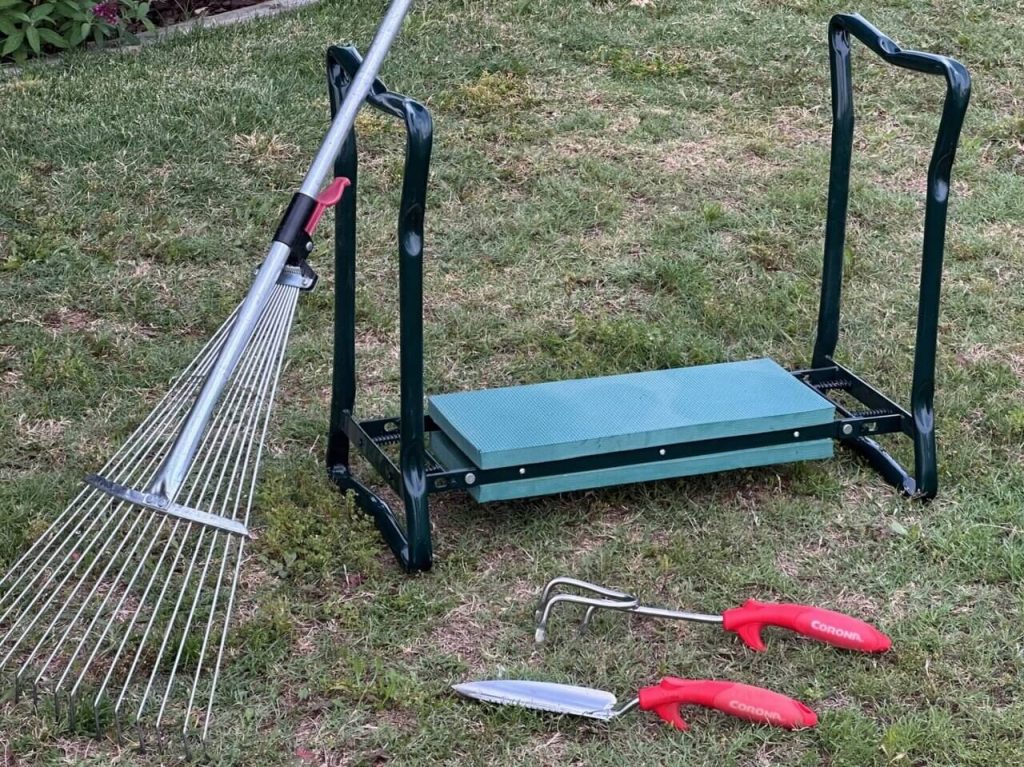
My garden is my happy place, and I am blessed to enjoy and spend time surrounded by soil and plants. Each season, as I learn more and add new plants, I also look for gardening aids to fit my body’s changing needs.
Although some days I like to believe I can do anything, my body reminds me later that’s not the case.
I’m speaking as a “mature gardener” who finds being outside with hands in the dirt to be both therapeutic and gentle exercise. It’s a fact that our bodies change as we age and each one of us will experience the effects of gardening in different ways.
The good news is simple adjustments or accommodation is available. These can ease the pains of gardening and allow senior gardeners and gardeners with disabilities to continue doing what we love!
Ergonomic Gardening Aid Tools
Some of the links in this post are affiliate links. This means if you click on the link and purchase the item, I will receive an affiliate commission at no extra cost to you.
Upper Body Gardening Aids
Arthritic finger joints and other dexterity issues can make gardening difficult and painful. Other repetitive issues like digging and pruning can cause carpal tunnel symptoms to flare up. Worse, these are issues that can cause symptoms early in life, not just in our mature lives.
I first experienced carpal tunnel issues in my 30s and had surgery on both hands in my 40s. Although I have nowhere near the problems I did pre-surgery, I find I can experience symptoms if I’m not careful.
As an accommodation, I try to use tools that cushion and decrease vibration to my hands and wrists. A few years ago, I stumbled across a l set of Corona hand garden tools with “Comfort Gel” handles at an estate sale. Without realizing the value of these tools, I purchased them because the grips looked more comfortable than the hand tools I was using at the time.
Now, I find these handles much easier to use, especially when my grip strength is decreased due to sore fingers.
Another option I’ve heard about from gardening friends but have yet to try is ratcheting pruners. The tool uses a ratcheting action to increase the force of your cut. They include an extra mechanism that allows you to cut in stages, which improves leverage. It’s helpful for gardeners with weaker hands.
Lower Body Gardening Aids
I’ve used a garden kneeler for years. Whether I kneel or sit, it extends the time I can tolerate a position. Last year, I purchased a kneeler with arms to help me stand up. I can flip it over and have a seat. Until I started using it, I didn’t realize how much I’d appreciate it!
Does your back “talk to you” after working in your garden? Ergonomic tools extend beyond small hand tools. Extendable rakes decrease the stress on your back and can be lighter in weight than some.
If you’re handy, some tools can even be modified at home by adding padded grips or extenders to reduce the need to bend or stretch.
The goal of using gardening aids is to prevent injury and allow you to continue doing what you love.
Raised Garden Beds for Growing at Variable Heights
Raised garden beds are amazing for so many reasons. Not only do they allow for easy soil amending, but they also heat up sooner in the spring than in-ground gardens and can be constructed at variable heights to allow for easy access.
When built on legs, they can be constructed to a comfortable standing or seated height for those who find bending and kneeling challenging.
It’s also important to consider the shape and size of beds to ensure plants can be reached from these positions as well. A “U” shape is a helpful layout for a gardener who prefers to remain in one location.
There are many styles of raised beds—from wooden frames to more durable materials like metal, brick, or stone. This allows beds to blend with existing architectural details and surrounding areas.
Raised beds offer new opportunities to those constrained by limited mobility and others who want to make gardening more ergonomic.
Garden Layout and Accessibility
Accessibility should be at the top of your considerations when planning a garden. Although you may be fit and agile now, that could change, or you may have a friend or family member with accessibility issues.
I planned my raised beds so that I have 3 or more feet between each one. I considered removing the sod and adding a no-maintenance walkway of gravel or mulch. However, I realized this could impact the ability of a wheelchair or someone with an unsteady gait. I opted to leave the sod to allow for easier access.
Vertical growing spaces decrease the amount of bending and increase access to plants.
Trellises are excellent for vining plants like peas, beans, squash, and cucumbers. They have tendrils that allow them to grab hold of vertical surfaces and love to climb toward the sun.
Vertical space on a patio can be filled with hanging baskets and wall planters with cherry tomatoes and flowers.
Similar to the ergonomic design of raised beds, vertical gardening moves the garden to a higher and more ergonomic level.
Container Gardening as an Alternative to In-ground
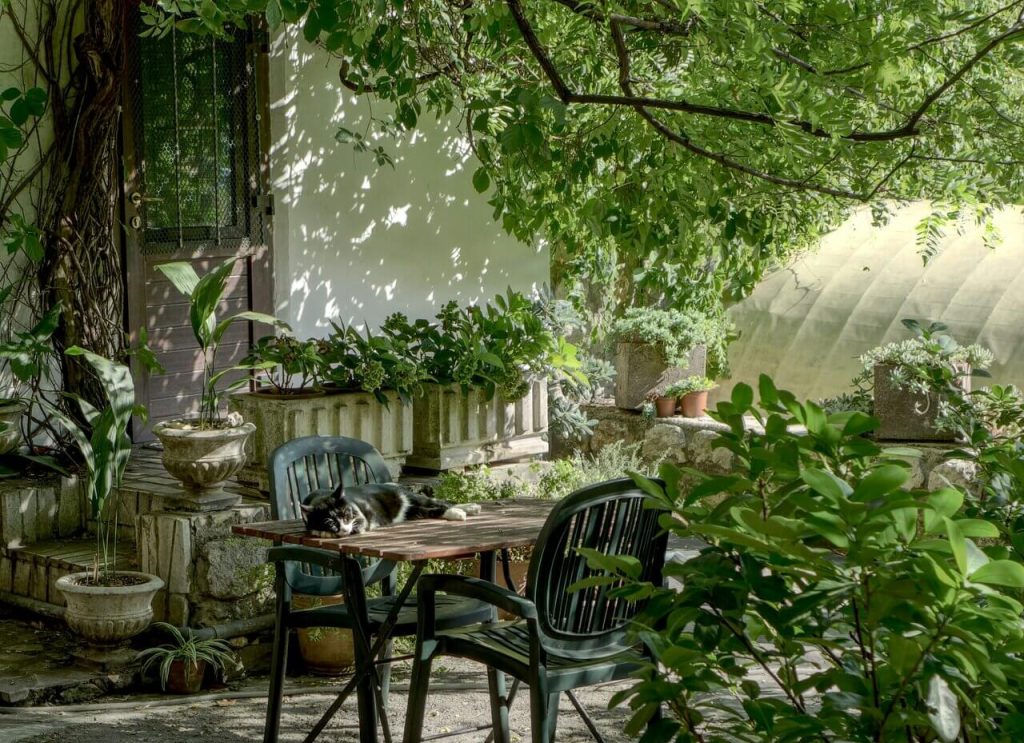
In addition to utilizing vertical spaces, containers, also known as planters or pots, provide a fantastic option for those who don’t want to or can’t deal with traditional garden plots.
They’re versatile and can be placed at various heights that are comfortable to reach. Tables, stands, chairs, and even other planters make it easy to create a container garden. Plus, they make rearranging a garden simple.
Plastic, ceramic, wood, fabric, metal, and anything capable of holding growing medium and plants can make a good space to grow plants.
For ease of accessibility lightweight materials that don’t easily crack if frozen are preferable.
When deciding what to grow, choose dwarf varieties of most plants that readily grow in containers.
Low-Maintenance Gardening
Keeping a garden beautiful shouldn’t be too much work, especially if you have limited mobility. The key is to choose plants that require less care.
Look for plants that don’t need a lot of water or trimming. Plants native to your area will be adapted to environmental conditions and are typically easier to grow.
Perennials like sedum, lavender, and hostas make good choices because they come back year after year. This means less care from you.
To decrease the amount of water necessary, use mulch and ground covers. In addition to conserving water, mulch also decreases weeds. This will save time and money.
I enjoy gardening and find the gentle exercise therapeutic and beneficial to my health. However, the peaceful moments spent relaxing and simply being in my garden are serene.
Prevention for a Lifetime of Gardening
Working outside in the sun and wind can cause sunburn and dehydration. Remember to hydrate yourself as well as your plants.
Just as some plants require more shade, a hat will help you prevent sunburn.
Gloves are useful to keep hands clean and protected from sharp objects and chemicals like pesticides and herbicides.
If chemicals are used, wear protective clothing and follow the manufacturer’s directions for application.
When you’re finished gardening and need to clean or remove shoes, a bristle scraper and boot jack take your shoes off without bending over.
Gardening has been a passion of mine since I was first introduced as a young child. It brings me joy and a sense of connection to nature.
The number of gardening aids available today makes gardening easier and reassures me that I can continue regardless of any health challenges I may face in the future.
The tools aren’t just practical solutions, they’re a support system committed to offering the ability to garden for a lifetime.
With the right aids, I know my garden will continue to blossom as will my passion to care for it.
Kim Nelson is a Master Gardener in Texas and previously in Colorado. She loves growing all types of plants and has a special love for growing vegetables. Join her gardening community to learn tips and gain insight to help grow your garden.



